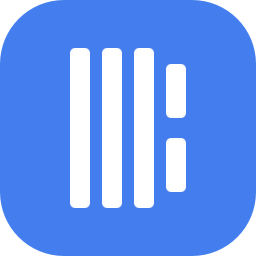Can Subscribe to Mint Change the Dilemma of the Web3 Creator Economy?
first level title
"Monetization problem": Mirror's tortuous path of exploration
secondary title
The History of Mirror Creator Tools
In June 2021, Mirror announced the introduction of the Editions feature. Editions are an improvement over NFT auctions that allow multiple users to own an Editions. Because earlier versions are more valuable, incentivize users to actively participate. At the same time, different levels of NFT pricing are provided, as well as a more cost-effective casting method to reward the super fans who appear first. It can be applied to crowdfunding projects to reward super fans instead of material gifts.
In September 2021, in order to achieve a fair issuance of Sybil-resistant NFTs to satisfy the game that anyone can participate in, thereby preventing a single address from being able to mint most NFTs, Mirror announced the introduction of a new feature Heroes, allowing participants in the $WRITE competition Create an identity as your own pseudonym or role identity, each account can only have one NFT, free minting can also be traded, and provides a market for those seemingly rare names. However, the campaign feature was discontinued shortly after due to poor performance.
In September 2021, Mirror opened the crowdfunding function. The specific functions of crowdfunding include: Token represents the membership of participating projects; NFT ladder, which provides digital collectibles; sponsorship platform, used to reward the top three sponsors; crowdfunding editor, making crowdfunding creation easier. At the same time, Mirror also announced a notice that it plans to open all its remaining creative component tools to the public in the future.
In October 2021, Mirror officially opened all its new functions: NFT version release, crowdfunding, NFT editing, sharing and voting, Token Race, auction, etc. Designed to support all creators, communities and DAOs throughout their lifecycle, thus providing all the tools for anyone.
In February 2022, in order to facilitate creators to quickly issue their own ERC 20 tokens on Mirror, which can enhance security and improve efficiency, Mirror released a new function: ERC 20 Factory contract, which is convenient for creators to issue tokens, and tokens can be set owner and total supply, in this process, users can also set the contract burn setting, which is to determine whether the token can be burned, thus affecting the circulation supply of tokens and token economics.
In May 2022, so that people can collect important works as digital collectibles, and set customizable supply and price to promote the development of all good ideas, Mirror also released two new new features: total ranking Leaderboards and Collectors Personal Pages to facilitate the process of discovering and exploring writing NFTs published by Mirror.
secondary title
Unsatisfactory revenue performance
So do these feature updates above bring desirable changes to the earnings of Mirror creators? BlockBeats conducted a detailed research on this in "Web3.0 Creator Economic Report: CreatorFi's Development Status and Imagination Space". According to the report data, Mirror's most important functions of Editions and writing NFT did not bring obvious benefits to creators. Economic Value.
As of the end of 2022, the two modules with the largest proportion of Mirror’s revenue generation are crowdfunding and auction functions, which are 6,464.26 ETH and 2787.04 ETH respectively, accounting for 90%, while writing NFT is only 210.43 ETH, accounting for 2%. Mirror user activities are mainly article publishing, and they are concentrated from the beginning to the middle of 2022, especially in May when the writing NFT function was officially launched, and the monthly publishing of articles exceeded 6,000. However, we compared the revenue data in May and found that writing NFT did not bring considerable benefits to creators, and the main source of income is still crowdfunding events. In other words, monetizing through Mirror is still a "whales' game."

By the end of 2022, 7,395 authors on Mirror have issued writing NFTs, accounting for only 8% of the total number of creators on the platform. The creators released a total of 13,000 writing NFT series, a total of 760,000 NFTs, and a total income of 149.1 ETH, or about 228,000 US dollars. Among them, the average price of a single writing NFT series Mint is $3.06.
In terms of collectors, as of 2022, a total of 78,000 users have collected writing NFT. Among them, users who have only collected 1 writing NFT accounted for 58.3%, and users who collected no more than 3 articles accounted for nearly 82%. Most readers have a little taste of spending money to collect NFT articles. From the side, it reflects the lack of high-quality content on the Mirror platform, and there are not many articles with collection significance. Among the top ten collectors, the total cost has dropped sharply since the second place.

Judging from the collection data, the Mint collections of writing NFTs were highly concentrated in May, and then the growth in the number of collections decreased significantly. At the beginning of the launch of the writing NFT function, the average price of the collection showed a short-term rise, but it began to decline with the rapid decline in Mint's revenue. On the one hand, there is no good content, and on the other hand, it cannot bring privileges like NFT Pass (such as subscribing to read paid content, deeply participating in future content creation, etc.), users quickly gave their own psychological prices for article NFT. As of writing, the top ten articles in Mirror collections are almost all project announcements, and all of them are collected at zero cost.
BlockBeats mentioned in the report that the biggest problem with the cold writing of NFT functions lies in the vague design of ownership and social attributes. Reader Mint writing NFT does not mean that he has acquired the ownership of the content of the article. Secondly, not every Mirror author is an influential figure like Vitalik, and most articles are difficult to have collection value in the traditional sense. Therefore, when readers bookmark an article, the value of the article NFT to them lies in showing their identity as a real fan of the creator and obtaining the qualification certificate for in-depth interaction with the creator.
At present, Mirror is still a set of decentralized content publishing standards in the eyes of most people, but we believe that a more suitable market positioning for Mirror should be "on-chain writing community". In the Web3.0 world that emphasizes community and composability, the primary task of content applications should be to help form and cultivate their own communities, but whether it is writing NFT or later wallet subscription functions, Mirror seems to be a little underwhelming. Authors cannot develop an audience through Mirror, so they have no motivation to produce original content, which further leads to a lack of high-quality content on the platform, which is also a problem that many Web3.0 content platforms may face.
first level title
What innovations has Subscribe To Mint made?
In order to help creators convert their subscribers into holders, thereby helping creators create an actively participating Web3 community, Mirror once again launched a new feature, Subscribe to Mint. The operation of Subscribe to Mint is very similar to the open edition drop mode, but adds Mirror-native style elements: Subscribe to Mint to better deepen Mirror's iconic web3 local publishing functions, including web3 subscription and Writing NFTs.
Based on the Subscribe to Mint function, collectors need to use their email to subscribe to the creator's Mirror publications, leading a communication channel for creators to interact with collectors on a regular basis. While making creators stronger, it can also make the connection between creators and the community deeper.
In addition to web3 subscriptions, subscribing to Mint also includes writing NFTs, collected from audiences channeled on Mirror through the Genesis NFT campaign. As an example, UFO sold out and raised an average of 0.5 ETH per post after attracting nearly 8,000 subscribers through Genesis Pass.
According to Mirror officials, the success of Subscribe to Mint can already be proven by testing new features on projects large and small on web3, such as: Optimism collected 334,000 subscribers and collected collections celebrating their achievements last year ; Base has gathered 222,000 subscribers to commemorate the historic cooperation between Base and Optimism; the famous web3 podcast UFO has also gathered 8,000 subscribers for their podcast.

first level title
How to create a collection with Subscribe To Mint?
After minting the Mirror Genesis NFT, get a test of the Subscribe to Mint function. Creators can enter the Mirror official website, click NFTs, and then click Create NFT collection.

Then upload the NFT picture, fill in the name and description of the collection. Note: collection is an ERC 1155 collection. You can also change the selected network (eth, optimism, polygon) in the advanced settings, set the symbol of the collection, change the address and royalty settings for receiving funds. Finally, click save and create, and the creator has completed creating his own subscription NFT collection. Please check the information yourself, these settings cannot be changed after deployment.

Currently, publishing and writing NFTs on Mirror is free. Creators of Subscribe to Mint NFTs are also currently not required to pay any platform fees associated with the minting of their Subscribe to Mint NFTs, and retain all minting proceeds other than platform fees and gas costs. Subscribe to Mint NFTs will charge collectors a flat platform fee of 0.00069 ETH per minted on Ethereum and Optimism, and 1 MATIC on Polygon.
For example, if a creator priced a subscription to the Mint NFT version at 0.01 ETH per NFT, the total cost to the collector would be 0.01069 ETH plus gas, while the creator kept the entire NFT price at 0.01 ETH. If the collector mints two NFTs, the total cost to the collector is 0.02138 ETH plus gas, while the creator keeps 0.02 ETH.
Regarding the release of Mirror's new features, many people also took this opportunity to question and question Mirror: Is Mirror's target group and audience a project party or a single creator? What are the outstanding features and advantages of Mirror? Some users who didn't get an answer even turned away from Mirror and embraced Medium and Substack. Let us continue to wait and see whether Mirror's Subscribe to Mint NFTs function can bring new waves to the creator economy.



